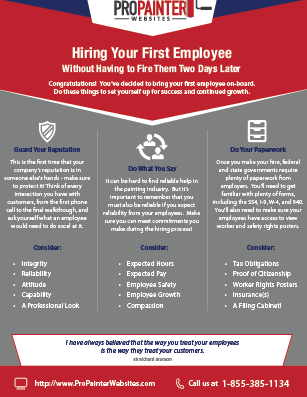Recognizing Seasonal Influences On Commercial Exterior Painting: Crucial Knowledge For Success
Recognizing Seasonal Influences On Commercial Exterior Painting: Crucial Knowledge For Success
Blog Article
Write-Up By-Carlson Celik
When you're intending a business exterior paint job, seasonal factors can make or break your outcomes. You'll want to consider exactly how temperature and humidity impact paint application and drying out times. Choosing the appropriate period can guarantee your paint adheres appropriately and lasts longer. But which seasons are really the very best for this kind of job? Let's explore the crucial elements that can impact your job's success.
The Impact of Temperature Level on Paint Application
When you're intending an industrial exterior paint project, the temperature can significantly influence exactly how well the paint adheres and dries.
Preferably, you want to repaint when temperature levels vary between 50 ° F and 85 ° F. If it's too chilly, the paint might not cure correctly, causing issues like peeling or splitting.
On the other side, if it's too hot, the paint can dry out also rapidly, avoiding correct bond and causing an irregular surface.
You ought to additionally take into consideration the time of day; early morning or late afternoon uses cooler temperature levels, which can be extra positive.
Always check the producer's suggestions for the details paint you're using, as they typically offer assistance on the excellent temperature level variety for optimum outcomes.
Humidity and Its Effect on Drying Times
Temperature level isn't the only environmental element that influences your commercial outside painting project; humidity plays a substantial duty as well. High moisture levels can reduce drying out times significantly, impacting the overall top quality of your paint task.
When the air is filled with moisture, the paint takes longer to treat, which can cause issues like poor attachment and a higher risk of mildew growth. If you're repainting on a specifically moist day, be prepared for extensive wait times between layers.
https://jaredsenwe.blogpixi.com/34668897/identify-the-vital-questions-to-ask-when-hiring-residence-painters-and-reveal-the-insights-for-transforming-your-home-with-a-fresh-application-of-paint to keep track of neighborhood weather and strategy accordingly. Ideally, try this for moisture levels in between 40% and 70% for optimum drying out.
Keeping these consider mind ensures your job remains on track and delivers an enduring surface.
Best Seasons for Commercial Exterior Paint Projects
What's the most effective season for your commercial external painting projects?
Springtime and very early autumn are normally your best choices. Throughout these seasons, temperatures are mild, and humidity degrees are usually lower, producing ideal problems for paint application and drying out.
Stay clear of summer's intense heat, which can cause paint to completely dry too swiftly, resulting in poor attachment and finish. Similarly, wintertime's cold temperature levels can prevent proper drying and curing, taking the chance of the longevity of your paint work.
Aim for days with temperature levels in between 50 ° F and 85 ° F for optimal outcomes. Remember to check the local weather prediction for rainfall, as wet conditions can destroy your job.
Planning around these factors ensures your paint task runs smoothly and lasts much longer.
Verdict
Finally, intending your commercial exterior paint jobs around seasonal factors to consider can make a considerable difference in the end result. By scheduling work throughout the excellent temperature levels and moisture levels, you'll ensure far better adhesion and drying out times. Bear in mind to watch on regional weather report and pick the correct time of year-- springtime and very early autumn are your best bets. Taking these steps will certainly aid you accomplish a resilient and specialist finish that lasts.
